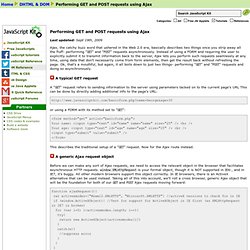

HTML-PDF-Converter.com - Free HTML to PDF converter online, conv. Dompdf - The PHP 5 HTML to PDF Converter. SourceForge forum archive located at: New forums are located at: All old sourceforge forum posts will be available starting 05/25/2009. A security vulnerability in dompdf has recently been discovered. The vulnerability would allow an attacker to access any file readable by the webserver. A solution is being developed presently. Until a new version is available, it is recommended that all users remove the dompdf.php file from their installation and to use the dompdf class directly (see If it is not possible to remove dompdf.php, the PHP ini option open_basedir should be set to a secure base directory (see dompdf-0.5.1 has been released! * image url and path handling has been tidied up and should now work properly * border styles are accepted in any order * vertical-align works properly within table cells * <br> works within inline tags (e.g.
. * CSS height property now respected by block elements properly * the "Attachment" option to dompdf->stream() has been fixed. Creating Gravatar Enabled Conference Badges: A How-To « Andy Pea. For the first time this year, WordCamp San Francisco conference badges will include your gravatar. Adding photos to conference badges is nothing new, however bringing your online gravatar into the offline world is a fairly exciting move.
I’d like to share how I created the PHP script to generate the badges. I hope people can re-use the script for future WordCamps, or even any other conferences. If you want to skip the tutorial and just download the script, here it is. I’ve released it under the GNU/GPL 2 license. Step 1: The FPDF library The FPDF library is a free to download and use, open source library that will generate PDF files without the need for any specific PHP libraries. Head on over and download the library. Step 2: Create the generation script and include everything we need Create two new PHP files in the root of your main directory and call one “generate.php” and the other “functions.php”. Step 3: Add image manipulation and download functions Step 5: The Beef That’s it!
Performing GET and POST requests using Ajax. Performing GET and POST requests using Ajax Last updated: Sept 19th, 2009 Ajax, the catchy buzz word that ushered in the Web 2.0 era, basically describes two things once you strip away all the fluff: performing "GET" and "POST" requests asynchronously.

Instead of using a FORM and requiring the user to explicitly submit it to transmit information back to the server, Ajax lets you perform such requests seamlessly at any time, using data that don't necessarily come from form elements, then get the result back without refreshing the page. Ok, that's a mouthful, but again, it all boils down to just two things- performing "GET" and "POST" requests and doing so asynchronously. A typical GET request A "GET" request refers to sending information to the server using parameters tacked on to the current page's URL This can be done by directly adding additional info to the page's URL: or using a FORM with its method set to "GET": This describes the traditional setup of a "GET" request. Result: <?